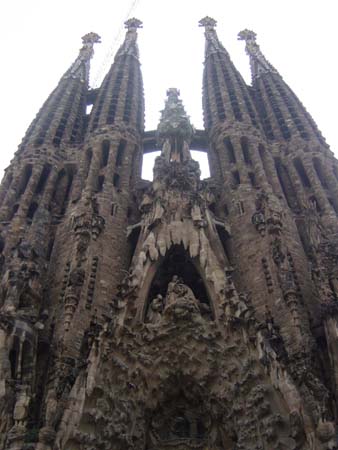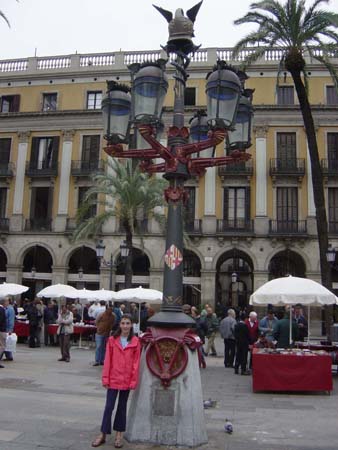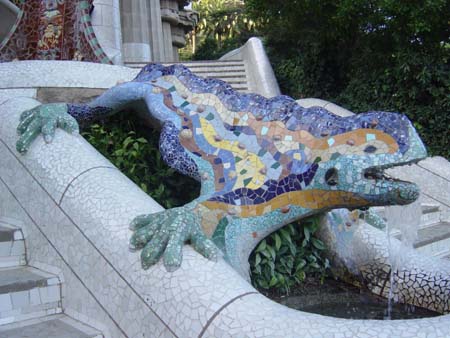KATIE'S KOMMENTS
October 25 - The topic for today is…the modernistic style of Gaudi in
Barcelona.
You turn the corner and look up at the famous La Sagrada Familia. It is incredible.
The enormous church with its ingenious design and tall spires was created
by the architect Gaudi. You walk closer to the front of the church and become
even more astounded. The front nave is completely engraved with thousands
of designs and curves giving it a drip-castle-like effect. You cannot identify
a single straight line in the complicated and stirring architecture. It has
curves, engravings, decorations, ornamental drip shapes and wondrous artistic
features that give it a strong sense of energy and dimension. You notice how
many of these designs involve elements of nature such as plant life and cave
forms. You wonder how anyone could have ever created this marvelous structure.
You gaze at the nave in amazement…this is only one side of the entire
cathedral and after 100 years of work to live on Gaudi's dream, the planned
20 spire cathedral is less than halfway complete. Gaudi had a dream, a different
kind of dream.
Gaudi was one of many architects who practiced Modernisme in their architecture.
This new style of architecture had different names throughout Europe. The
British and French called it Art Nouveau, the Italians called it lo stile
Liberty, and to the Germans it was Jugendstil (Youth style). Regardless of
the name, this unique style of architecture had the same objective. The aim
of this unusual technique was to create an original style for the Modern age.
This method involved using aspects of nature and fantasy to create a gracefu l,
and in some cases energetic structure. There was an approach of expressiveness
and curvature in the architecture, rather than the usual form of mathematical
structure. This allowed much playfulness and creativity to be carved into
the architecture. Barcelona, home of the inspirational architecture of Gaudi,
was one of three centers of this modernistic style. The architecture by Gaudi
in Barcelona includes the Sagrada Familia, Parc Guell, and numerous homes
and apartment buildings hidden in the packed buildings of the large city.
l,
and in some cases energetic structure. There was an approach of expressiveness
and curvature in the architecture, rather than the usual form of mathematical
structure. This allowed much playfulness and creativity to be carved into
the architecture. Barcelona, home of the inspirational architecture of Gaudi,
was one of three centers of this modernistic style. The architecture by Gaudi
in Barcelona includes the Sagrada Familia, Parc Guell, and numerous homes
and apartment buildings hidden in the packed buildings of the large city.
All in all, Gaudi's modernistic style of architecture in Barcelona made
the city a very interesting and different place for us. The Sagrada Familia
broke the mold of typical Gothic churches that we have seen in Europe by going
a little "over the top." The colorful Parc Guell with its fountains,
benches and houses made from fragments of decorative tiles, added a fantasy
element to Gaudi's architecture. This unique style of artistic expressiveness,
movement, and energy added liveliness and character to the entire city of
Barcelona.
